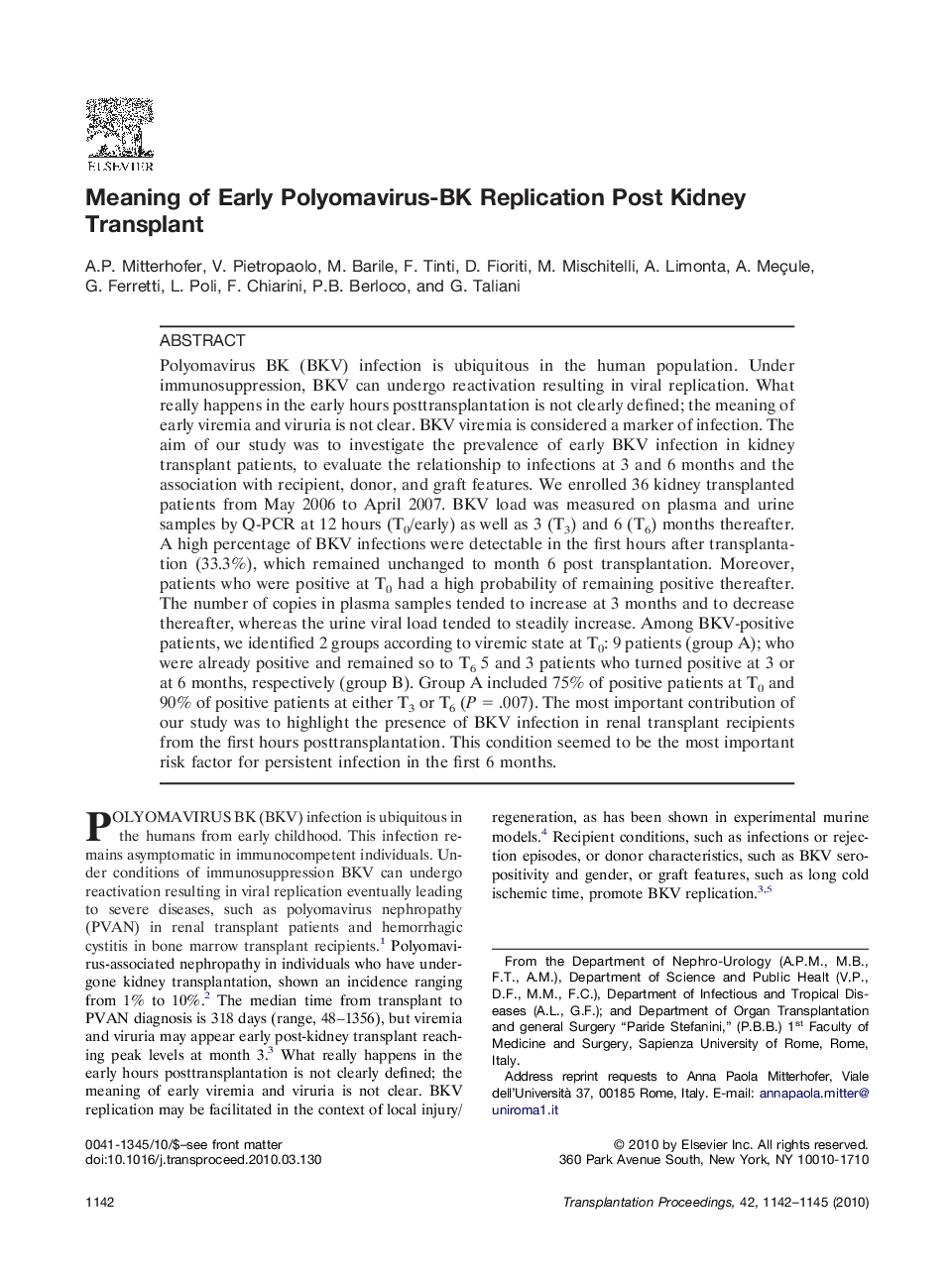| Article ID | Journal | Published Year | Pages | File Type |
|---|---|---|---|---|
| 4259611 | Transplantation Proceedings | 2010 | 4 Pages |
Abstract
Polyomavirus BK (BKV) infection is ubiquitous in the human population. Under immunosuppression, BKV can undergo reactivation resulting in viral replication. What really happens in the early hours posttransplantation is not clearly defined; the meaning of early viremia and viruria is not clear. BKV viremia is considered a marker of infection. The aim of our study was to investigate the prevalence of early BKV infection in kidney transplant patients, to evaluate the relationship to infections at 3 and 6 months and the association with recipient, donor, and graft features. We enrolled 36 kidney transplanted patients from May 2006 to April 2007. BKV load was measured on plasma and urine samples by Q-PCR at 12 hours (T0/early) as well as 3 (T3) and 6 (T6) months thereafter. A high percentage of BKV infections were detectable in the first hours after transplantation (33.3%), which remained unchanged to month 6 post transplantation. Moreover, patients who were positive at T0 had a high probability of remaining positive thereafter. The number of copies in plasma samples tended to increase at 3 months and to decrease thereafter, whereas the urine viral load tended to steadily increase. Among BKV-positive patients, we identified 2 groups according to viremic state at T0: 9 patients (group A); who were already positive and remained so to T6 5 and 3 patients who turned positive at 3 or at 6 months, respectively (group B). Group A included 75% of positive patients at T0 and 90% of positive patients at either T3 or T6 (P = .007). The most important contribution of our study was to highlight the presence of BKV infection in renal transplant recipients from the first hours posttransplantation. This condition seemed to be the most important risk factor for persistent infection in the first 6 months.
Related Topics
Health Sciences
Medicine and Dentistry
Surgery
Authors
A.P. Mitterhofer, V. Pietropaolo, M. Barile, F. Tinti, D. Fioriti, M. Mischitelli, A. Limonta, A. Meçule, G. Ferretti, L. Poli, F. Chiarini, P.B. Berloco, G. Taliani,
